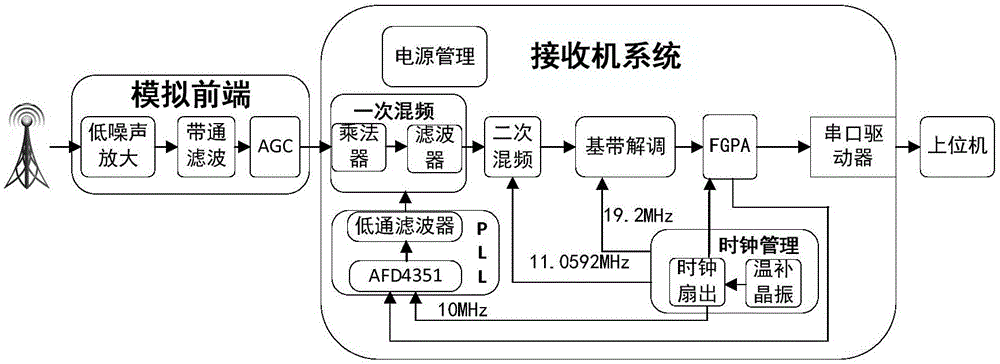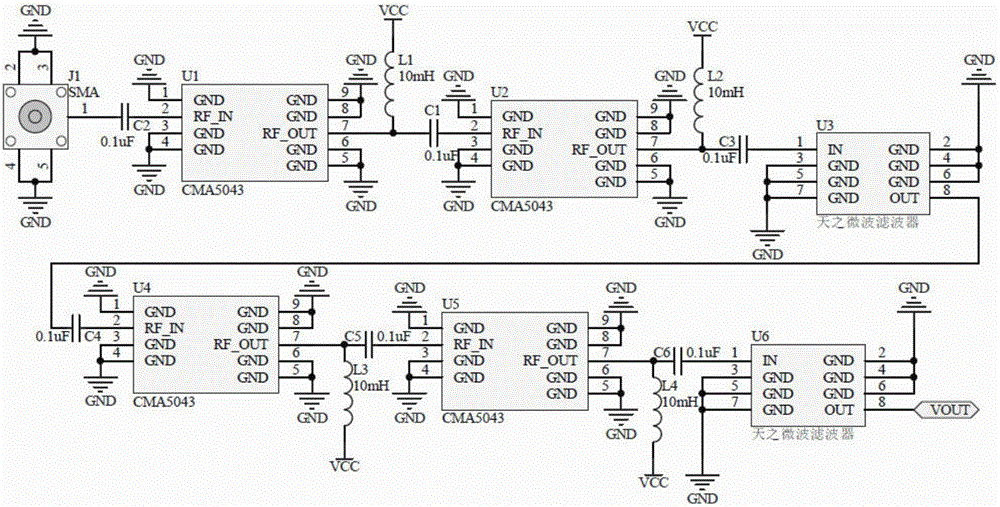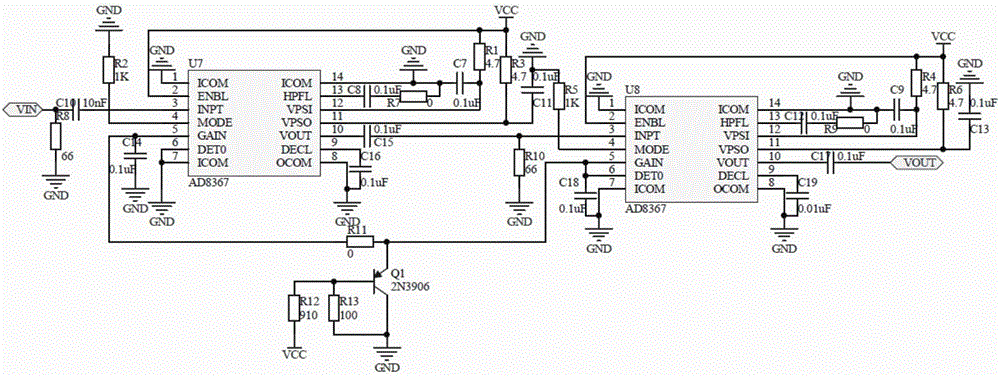AIS receiver based on superheterodyne principle
A receiver, superheterodyne technology, applied in the transmission system, electrical components, etc., can solve the problems of AIS system bit error rate reduction, pending research, distance limitation, etc., to ensure signal-to-noise ratio, improve demodulation sensitivity, reduce The effect of bit error rate and cost
- Summary
- Abstract
- Description
- Claims
- Application Information
AI Technical Summary
Problems solved by technology
Method used
Image
Examples
Embodiment Construction
[0053] The invention utilizes the superheterodyne principle and realizes the design of the AIS receiver based on the FPGA processor. The present invention adopts a low-noise amplifier and a wide dynamic range AGC circuit to improve the demodulation sensitivity of the system and increase the AIS detection range; the stability of the local oscillator is improved by using a temperature-compensated crystal oscillator and the ADF4351 analog phase-locked loop; by using the ta31136 intermediate frequency The signal processor and CMX7042 baseband processor simplify the design of the system; through the signal integrity design of the system, the stability of the system is improved. In order to facilitate those of ordinary skill in the art to understand and implement the present invention, the technical solution of the present invention will be described in detail below in conjunction with the accompanying drawings and embodiments.
[0054] This embodiment is an AIS receiver based on th...
PUM
 Login to View More
Login to View More Abstract
Description
Claims
Application Information
 Login to View More
Login to View More - R&D
- Intellectual Property
- Life Sciences
- Materials
- Tech Scout
- Unparalleled Data Quality
- Higher Quality Content
- 60% Fewer Hallucinations
Browse by: Latest US Patents, China's latest patents, Technical Efficacy Thesaurus, Application Domain, Technology Topic, Popular Technical Reports.
© 2025 PatSnap. All rights reserved.Legal|Privacy policy|Modern Slavery Act Transparency Statement|Sitemap|About US| Contact US: help@patsnap.com



